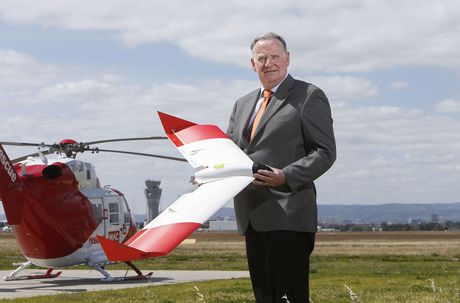Major mishap from illegal drones only a matter of time: Avinet

Adelaide-based Avinet has warned that the recent spike in usage of drones by private individuals, hobbyists and emerging ‘for hire’ operators has increased the risk of a drone-linked aviation fatality.
Avinet’s chief executive, Mike Mulvihill, has spoken out after recently attending industry seminars on unmanned aerial systems (UAS) in Canada, the USA and New Zealand.
“The general consensus amongst experienced aviation operators, on the topic of UAS, is that an accident associated with UAS usage is imminent,” said Mulvihill. “It is a case of when it will happen, not if it will happen.”
The company is a major supplier of operations and risk management tools for the aviation sector. According to Mulvihill, the growing prevalence of drones in private and “largely uninformed” hands is creating a safety issue not seen before in general airspace.
“The technical capability and affordability of drones has taken the use of these UAS into a grey area where there are sound fundamental regulations in place but a general ignorance on the part of the new user group of what safety and compliance regimes are necessary for their operation,” said Mulvihill.
“The United States and New Zealand are reporting weekly incidents of breaches of airspace by poorly managed drones, including such mishaps as drones crashing into helicopter cockpits, and we are likely to start witnessing the same trend in local airspace.”
He believes the use of drones by responsible corporations is not a concern as they understand their obligations for corporate governance and compliance with safety laws, as well as the need to maintain certifiable schedules of operational activity and regulatory approvals.
He said current regulations are also very clearly stated and ignorance of the law is not an excuse or a plea if an incident happens.
“What Australian users need to respect within the burgeoning hobby and light commercial drone market is that the main hurdle they face is not a technological or flying issue but a regulatory one,” said Mulvihill.
“The safety and compliance laws around drone flying are there to protect the public. We are seeing drones operated in highly populated areas such as beaches, sporting arenas and, more scarily, the vicinity of fixed- or rotary-wing flights approaching airports — open spaces popular with drone novices but not necessarily legal airspace for these UAS.”
The company’s software solution, Air Maestro, is designed to aid compliance and management with aviation regulatory requirements. New developments allow operators to track UASs in their fleet, record flight records and pilot logbook hours, as well as track incidents and accidents.
“Off-the-shelf drones for private use can weigh less than a couple of kilograms, but for them to impact with a propeller on a light aircraft, a rotor or a bubble cockpit in a chopper, or be ingested into a jet engine, is a one-way trajectory to a potential disaster,” explained Mulvihill.
“As a provider to the industry, we urge all drone owners and operators to pay far more attention to the rules, seek help in complying with the current regulations and put public safety ahead of self-interest and pleasure.”
A simple rule of thumb to meet Australia’s current UAS regulations involves certification.
“No drone can be flown for commercial gain without certification. Any commercial flights without certification are illegal,” said Mulvihill.
“One critical rule that will limit mishaps is to remember that no private drone flights (not approved by the regulator) are allowed within a 5.5 km radius of airfields or sites such as hospitals which boast rooftop emergency landing areas for medivac choppers.”
Melbourne Workplace Wellbeing Summit at WHS Show Melbourne
Running from 21–22 May, the Workplace Health & Safety Show Melbourne will feature the...
Do a young worker safety check-up this NSW Youth Week
With more than 15,000 of the state's 25-and-unders injured each year, SafeWork NSW is urging...
2025 Champions of Safety Awards nominations close 4 April
Nominations for the 2025 Champions of Safety Awards — an initiative by the Workplace Health...









